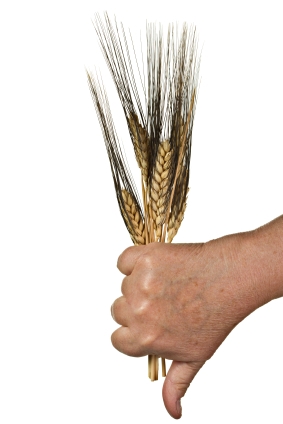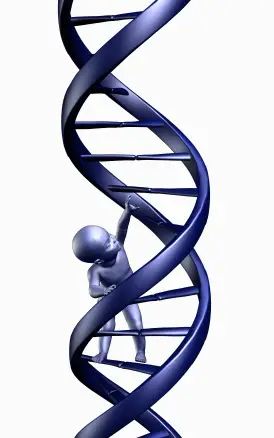How WWII & the “Winter of Starvation” Helped the Discovery of Celiac Disease

It took a long time for doctors to figure out the connection between what we now call celiac disease and wheat. You have to understand: It was difficult for people to believe. Wheat was a staple of the diet for many hundreds of years in many cultures.
The cause of celiac disease was actually confirmed for at least one doctor by observing the years of malnutrition in the Netherlands during World War II. In 1944 and 1945 the so-called “Winter of Starvation” resulted in a severe limitation in the availability of bread. Pediatrician Willem-Karel Dicke, medical director of the Juliana Children’s Hospital in the Netherlands, discovered that some of his sickest patients actually improved while everyone else was going hungry.
The children with celiac disease who got no bread started to get better.
In the late 1920’s and early 1930’s, doctors were trying to discover how to treat children with celiac disease, which was known by a different name (Gee-Herter’s disease). The disease was already known as causing children to be very ill, lose weight, and even die. One diet, called the banana diet, cured 8 children while 2 untreated children died. After that, doctors tried every kind of diet they could imagine to treat celiac disease.
Diets that were tried included just fruit and vegetables, mainly meat, and mainly milk products, among others. It is unclear whether or not wheat was allowed on some of these diets. One doctor described the relapse of patients who were on well on the fruit diet and then given bread.
As early as 1934, Dicke was suspicious of wheat. He started experiments with wheat-free diets. Apparently, in 1936, one very observant mother noted that her child’s rash improved when she stopped giving him bread. This made Dicke even more suspicious.
He had already published a report in 1941 suggesting a fruit and vegetable diet for his patients, but these were not available during the war. He gave them a simple diet with no bread or rusks, and porridge without wheat flour.
He kept meticulous dietary records of one of his patients, from 1936 on. This boy was repeatedly put on a wheat-free diet in the hospital. He would improve enough to go home, and then relapse on a normal diet. Dicke kept growth charts of this patient as well as others showing that they could grow like normal children when on a wheat-free diet.
After World War II, Dicke went to work with J. H. van der Kamer, who developed a way to measure the amount of fat in stool. If a lot of fat passes through the body, it means it is not being absorbed. This was the first way to prove that children with celiac disease were not absorbing the much of the nutritional content of a normal diet.
Dicke and others were also able to discover that the gliadin or gluten part of wheat was responsible for the symptoms. His results were confirmed by others, but not everyone was ready to adopt the gluten-free diet, especially in the United States.
Once there was a technique in place to biopsy the intestine, it became clear that the gluten-free diet had to be maintained for long periods of time.
While there were certainly other reasons for Dicke’s understanding of celiac disease and the role of wheat and gluten, the years during the war during which there was essentially no bread available forced a larger number of patients into eating a gluten-free diet. While others starved, the children with celiac disease improved.
This story is often repeated as a lesson in how one disease (starvation in this case) can improve another (celiac disease in this case). There is no way to know how long it might have taken to get these results without the events of World War II.
Similarly, there is no way to know what the source of the next great advance in the understanding of celiac disease will be. It will probably come from research. But there is always a possibility that something unexpected will shed new light on the illness.
[hr]
References:
Stiehm, E.R. Disease Versus Disease: How One Disease May Ameliorate Another. Pediatrics 2006; 117(1): 184-191.
Van Berge-Henegouwen. G.P., Mulder, C.J.J. Pioneer in the gluten free diet: Willem-Karel Dicke 1905-1962, over 50 years of gluten free diet. Gut 1993; 34:1473-1475.
Photo: American WWII Cemetery in Margraten, The Netherlands






